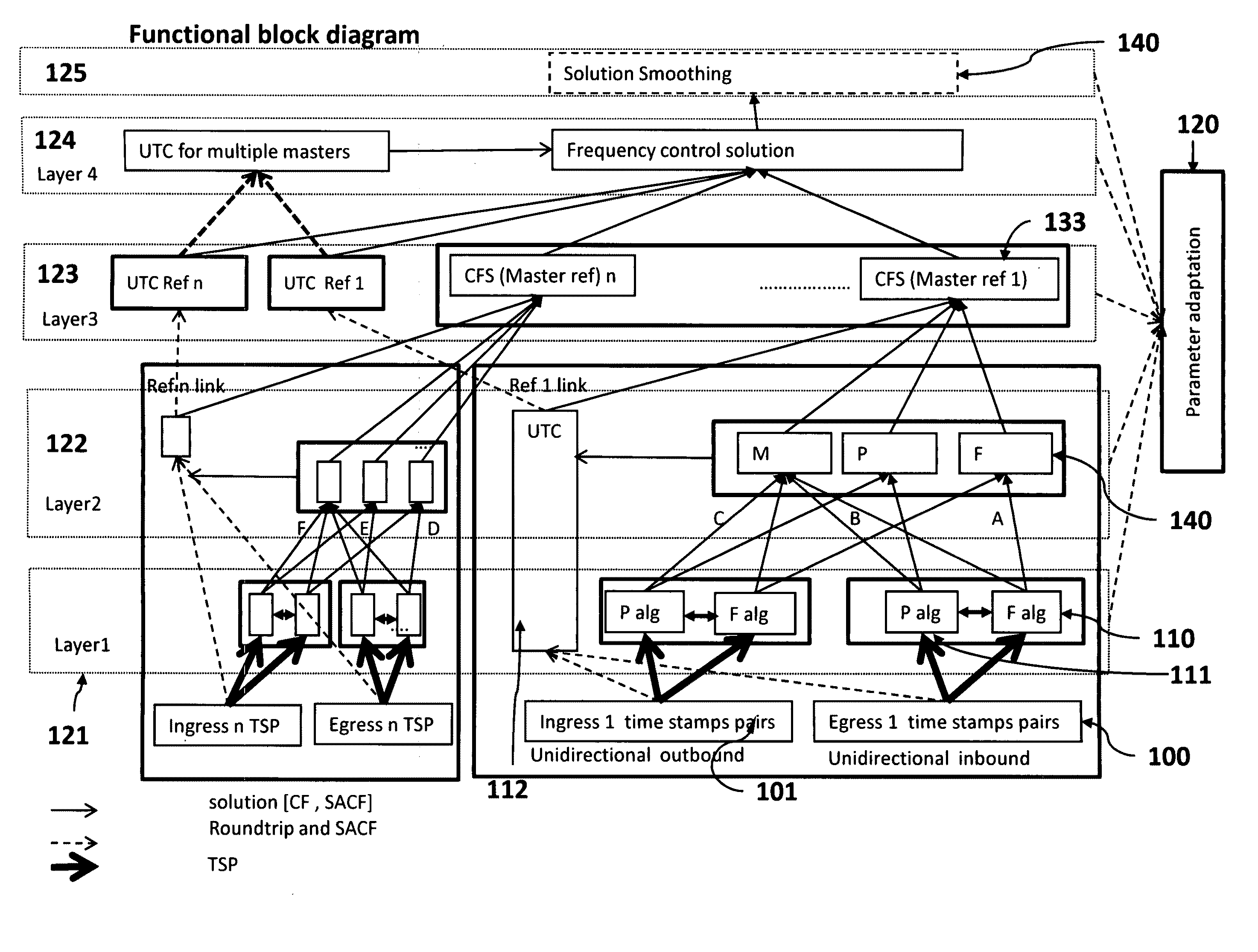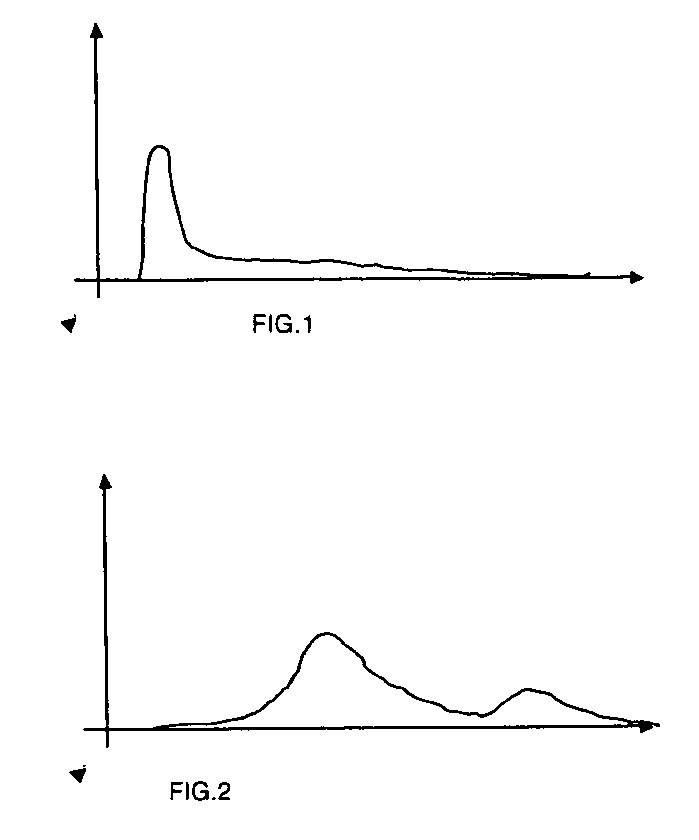Network timing synchronization systems
a network timing and synchronization technology, applied in multiplex communication, instruments, horology, etc., can solve the problems of high variation of delays, inaccurate synchronization, and significant number of clock cycles that can pass with the clock out of synchronization, so as to reduce the upgrade cost and upgrade time, and the effect of inexpensive and ubiquitous precision timing synchronization
- Summary
- Abstract
- Description
- Claims
- Application Information
AI Technical Summary
Benefits of technology
Problems solved by technology
Method used
Image
Examples
embodiment example 1.2
Duet CFF Embodiment Example 1.2
[0134]The difference between the local and the remote frequency results in a sloped distribution of TSP (Dn−An, An) events 222 on the graph in FIG. 23. Due to quantization error, stripes of densities may occur for the perfect propagation delay conditions. We can determine the position of the stripe that will encompass the maximum number of events inside WS, if local and remote QE is known (FIG. 24). Calculate CF for each of the TSP where D(n)−D(n−1)=dDn>min_distance. Distribution stripes may result from the quantization error at source or at destination (especially from the MII bus running at 25 MHz). Elements within one stripe (here named group) will not be mixed with the other group in the subsequent computings.
[0135]First Group is necessary to filter the VTs: −AT00.
[0136]Second Group is optional: QEmin−AT00+QEmax, if QEmax−QEmin
[0137]Third Group is also optional: −QEmax−AT00−QEmin, if QEmax−QEmin
[0138]Where QE is the quantizati...
example
[0379]Consider the topology: Master end, two intermediated switches: SW1, SW2 and Slave Reception (SR).
[0380]Master departure Time stamp=MT. Slave reception time stamp=SR
SR(n)=MT(n)+PDV1(n)+PDV2(n)+constant_PDV,
where n is the sequence ID and MT(n) is the master departure time stamp. The first switch SW1 will replace MT(n) by MT(n)+PDV1(n). The second switch SW2 will replace the received embedded time stamp (MT(n)+PDV1(n)) by MT(n)+PDV1(n)+PDV2(n).
[0381]The slave would determine the propagation delay=SR(n)−[MT(n)+PDV1(n)+PDV2(n)]=[0382]=MT(n)+PDV1(n)+PDV2(n)+constant_PDV−[MT(n)+PDV1(n)+PDV2(n)]=[0383]=constant_PDV.
[0384]In real life there are also variable delays at physical link layer (here marked as constant_PDV) but overall this protocol will improve significantly—by orders of magnitude—the accuracy of timing calculations.
[0385]IV. Method and Apparatus for Simulation, Test and Debug
[0386]Software Simulation Test Bench
[0387]Our Algorithm receives time stamps from the protocol stack...
PUM
 Login to View More
Login to View More Abstract
Description
Claims
Application Information
 Login to View More
Login to View More - R&D
- Intellectual Property
- Life Sciences
- Materials
- Tech Scout
- Unparalleled Data Quality
- Higher Quality Content
- 60% Fewer Hallucinations
Browse by: Latest US Patents, China's latest patents, Technical Efficacy Thesaurus, Application Domain, Technology Topic, Popular Technical Reports.
© 2025 PatSnap. All rights reserved.Legal|Privacy policy|Modern Slavery Act Transparency Statement|Sitemap|About US| Contact US: help@patsnap.com



